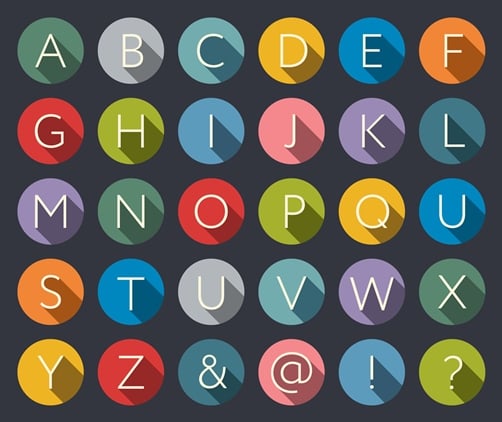
Sequencing refers to our ability to perceive items in a specific order and remember that sequence. In saying the days of the week, months of the year, a telephone number, the alphabet, and counting, the order of the elements is paramount.
Many people with dyslexia have trouble with sequencing. Dyslexia is a learning disorder that involves difficulty learning to read or interpret words, letters, and other symbols, but that does not affect general intelligence.
Naturally, sequencing deficits will affect a person’s ability to read and spell correctly. After all, every word consists of letters in a specific sequence. In order to read, one has to perceive the letters in sequence and also remember what word is represented by the sequence of letters in question. Changing the sequence of the letters in name can make it mean or amen.
Studies link dyslexia to sequencing difficulties
Guthrie and colleagues investigated relationships between visual sequential memory and reading in 81 typical and 43 disabled readers. Significant positive associations were identified between visual sequential memory and paragraph comprehension, oral reading, and word recognition.
A study published in the Journal of General Psychology compared 33 dyslexic and 33 control eight to 12-year-old children and found the dyslexic children inferior to controls on tasks involving visual sequential memory and auditory sequential memory.
Another study, published in the Archives of Clinical Neuropsychology, compared 24 readers with auditory dyslexia and 21 with visual dyslexia to 90 control group participants. The study revealed auditory sequential memory impairments for both types of readers with dyslexia and multiple strengths for good readers.
Dyslexia symptoms and sequencing
The following are a few of the dyslexia symptoms that indicate sequencing difficulties:
- When reading, the person with dyslexia may put letters in the wrong order, reading felt as left, act as cat, reserve as reverse, expect as except.
- They may put syllables in the wrong order, reading animal as ‘aminal’, hospital as ‘hopsital’, enemy as ‘emeny’.
- They may put words in the wrong order, reading are there for there are.
- People with dyslexia may write letters in the wrong order, spelling Simon as ‘Siomn’, time as ‘tiem’, child as ‘chidl’.
- They may omit letters, i.e., reading or writing cat for cart, wet for went, sing for string.
.
Children with dyslexia may also have trouble remembering the order of the alphabet and strings of numbers, for example, telephone numbers, the months of the year, the seasons, and events in the day. Younger children may also find it hard to remember the days of the week. Some cannot repeat longer words orally without getting the syllables in the wrong order, such as preliminary and statistical.
Here are some other tasks that tend to be a challenge for those with dyslexia, according to the website BrightStar Learning:
- Shoe-tying: This is a skill that involves a sequence of steps as well as directionality. Many children with dyslexia cannot tie their shoes until they are in their teens.
- Forming letters: Kids with dyslexia may begin and end letters at strange points. They can’t remember the series of pencil strokes they must make to form the letters. So, they just dig in and start writing from wherever and continue on until the letter bears some relation to its correct form.
- Long division: Long division problems entail following a sequence of five steps, in the same sequence, for each problem. The dyslexic student may have a good grasp of each step but may not perform them in the proper sequence, and they may end up generating the wrong answer.
Overcoming sequencing difficulties
Edublox specializes in educational interventions that make children smarter, help them learn and read faster, and do math with ease. Our programs enable learners to overcome reading difficulties and other learning obstacles, assisting them to become life-long learners and empowering them to realize their highest educational goals.
Edublox aims to improve cognitive abilities, including sequencing ability and sequential memory — both auditory and visual sequential memory. Edublox also offers live online tutoring to students with dyslexia, dysgraphia, and other learning difficulties.
Watch the playlist below and experience how Edublox training and tutoring help turn dyslexia around. Book a free consultation to discuss your child’s learning needs.
.
References:
Guthrie JT, Goldberg, HK. “Visual sequential memory in reading disability.” Journal of Learning Disabilities. January 1972.
Hornsby B. Overcoming Dyslexia. Juta and Company Ltd. 1984.
Howes NL, Bigler ED, Lawson JS, Burlingame GM. “Reading disability subtypes and the test of memory and learning.” Archives of Clinical Neuropsychology. April 1999 14(3): 317–339.
Stanley G, Kaplan I, Poole C. “Cognitive and nonverbal perceptual processing in dyslexics.” Journal of General Psychology. 1975, 93(1): 67-72.
.

